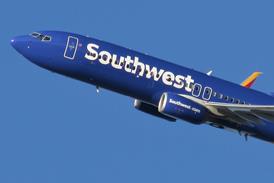Tim Furniss/LONDON
Russian cosmonauts Sergei Zaletin and Alexander Kaleri docked with the Mir space station on 6 April after their launch on a Soyuz TM spacecraft from Baikonur on 4 April. It is the first manned mission to the ageing station since it was abandoned in August 1999.
The crew must assess whether the station can be returned to service to support more manned missions if the privately owned international MirCorp can raise funds. The immediate tasks will be to restore the internal pressure of Mir and find the source of a leak which has caused pressure loss.
The MirCorp organisation, which has invested up to $20 million to support the flight of Soyuz TM30 to re-activate Mir, hopes to raise funds for more missions to keep the Russian station operational. "We have begun intensifying our efforts to create a commercial structure that will permit the continued presence of people aboard Mir," says Jeffrey Mamber, MirCorp president.
Mamber has appointed the William Morris Agency to identify mass media and entertainment merchandising opportunities for Mir. He says that discussions with potential investors are ongoing. Possible customers include "the son of a US astronaut and a representative of the world of entertainment", says Mamber.
The continued operation of Mir is worrying space officials in the USA. "How can the Russians maintain a serious involvement in both Mir and the International Space Station [ISS]? They are so cash-strapped, I don't see how they can do it," says Rep Dave Weldon, the vice-chairman of the House Science Committee's Space and Aeronautics Subcommittee. He maintains that Russia is "not serious about the ISS".
NASA is also concerned about Russia's ability to support the ISS. NASA expected Mir to be out of action and de-orbited by the summer. It also fears that government money allocated for the ISS may support Mir. The TM30 mission, which may be extended beyond its planned 45 days, will also conduct pharmaceutical, electronics and Earth observation experiments.
The crew will also operate a new digital imaging MOMS-2P modular optical electronic multispectral scanner and evaluate a refrigerator-radiator module for future space power units.
Source: Flight International























